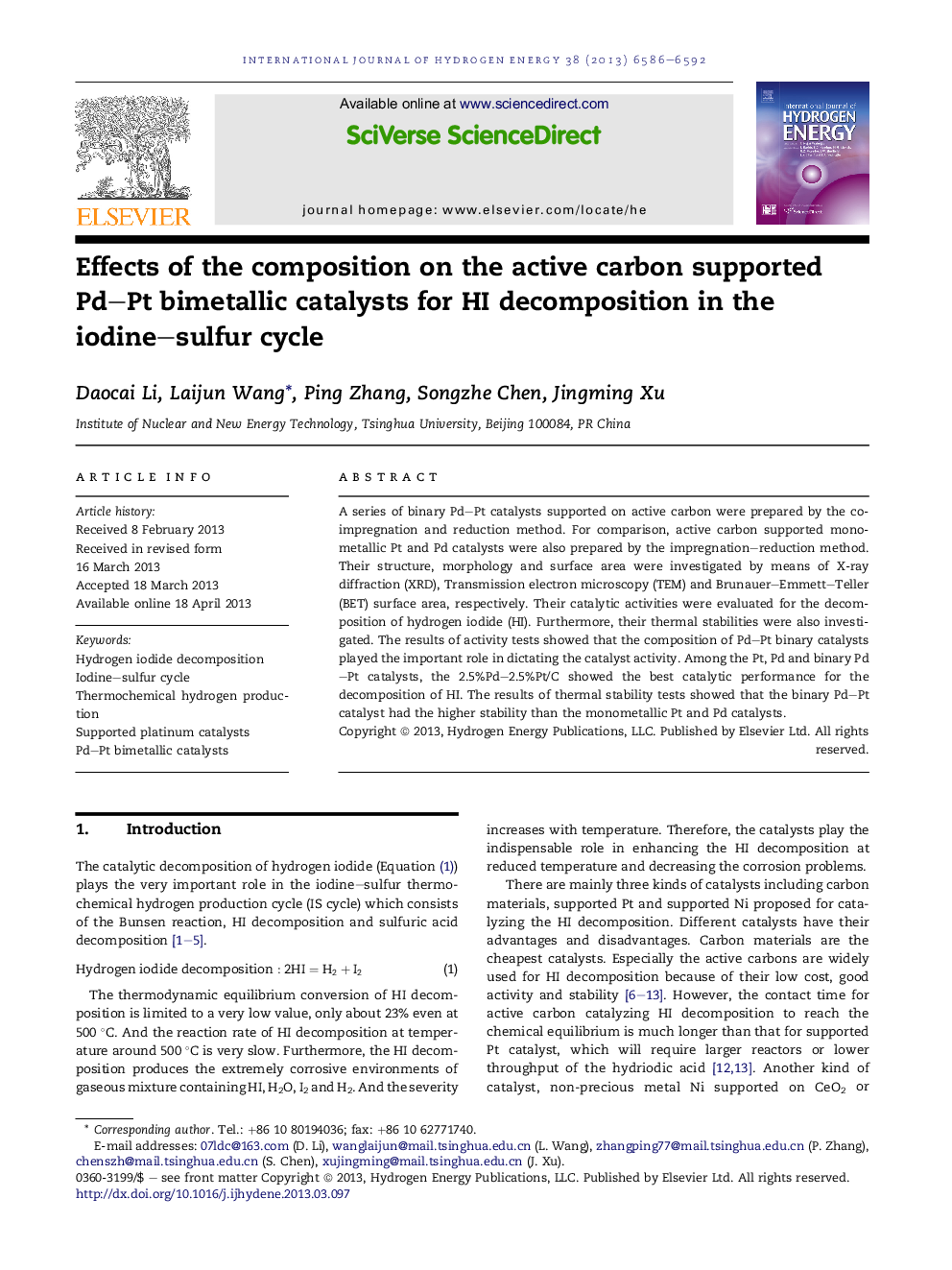| Article ID | Journal | Published Year | Pages | File Type |
|---|---|---|---|---|
| 1281578 | International Journal of Hydrogen Energy | 2013 | 7 Pages |
•A series of Pd–Pt/C, Pd/C and Pt/C catalysts were prepared.•Their differences in structure, surface area and morphology were investigated.•Their catalytic activities were compared for HI decomposition.•The 2.5%Pd–2.5%Pt/C is the most active among Pt, Pd and Pd–Pt catalysts.•The Pd–Pt catalyst has the better thermal stability than the Pt or Pd catalyst.
A series of binary Pd–Pt catalysts supported on active carbon were prepared by the co-impregnation and reduction method. For comparison, active carbon supported monometallic Pt and Pd catalysts were also prepared by the impregnation–reduction method. Their structure, morphology and surface area were investigated by means of X-ray diffraction (XRD), Transmission electron microscopy (TEM) and Brunauer–Emmett–Teller (BET) surface area, respectively. Their catalytic activities were evaluated for the decomposition of hydrogen iodide (HI). Furthermore, their thermal stabilities were also investigated. The results of activity tests showed that the composition of Pd–Pt binary catalysts played the important role in dictating the catalyst activity. Among the Pt, Pd and binary Pd–Pt catalysts, the 2.5%Pd–2.5%Pt/C showed the best catalytic performance for the decomposition of HI. The results of thermal stability tests showed that the binary Pd–Pt catalyst had the higher stability than the monometallic Pt and Pd catalysts.
